#121: Amanita muscaria, Part 2: Connecting to the Divine
Across the globe, Amanita muscaria (the “Fly Agaric”) is the go-to mushroom for connecting humans with the divine. I will forego describing this mushroom, since I have already done that in FFF#069. Fortunately, you are familiar with this toadstool. It is the mushroom with a red cap covered in white dots, with white gills underneath, and supported by a white stipe. Probably about 90% of mushroom art is based on this mushroom, so you have definitely seen it around (for example: in Mario games, Disney’s Fantasia, lawn decorations, and Christmas ornaments). Aside from the visual aesthetic the mushroom provides in your daily life, muscaria has had a deep and lasting impact on a variety of cultures around the world, from Hinduism to Siberian shamans to Santa Claus.
Reconstructing the roots of ancient cultures relies heavily on guesswork, so none of the theories described below can be proven. Proponents of all sides have compelling arguments, but in all likelihood, the truth lies somewhere in between. It is therefore left up to the reader to decide what to believe.
Soma in Hinduism and Haoma in Zoroastrianism
In 1968, R. Gordon Wasson published the book Soma: Divine Mushroom of Immortality, in which he laid out the case for A. muscaria being the identity of the Soma plant. Soma is a minor deity in Hinduism but plays a major role in the Rig Veda. The Rig Veda was written down in 300 BCE, but its oral history extends far earlier. That text contains around 120 hymns to Soma, devotes an entire book to him, and references him in many other places. In the Rig Veda, Soma is considered to be a plant, the euphoric/hallucinogenic drink produced from that plant, and a god. As a god, Soma is associated with a wide variety of roles. Different sources place emphasis on different roles, with the most common ones being: the moon god, inspiration for sages and poets, healing, and immortality. Some sources describe Soma as necessary for all life, perhaps even for the gods themselves. The gods often drink Soma, which supposedly gives them immortality. Being gods, they prefer to drink Soma from the moon. A waxing moon is therefore in the process of being refilled with Soma while a waning moon is being drunk by the gods. As a result of this tale, modern Hinduism has conflated Soma with the moon god Chandra.
Another hallucinogenic drink called Haoma is described by the Avesta of the Zoroastrians from the area that is modern day Iran. The Avesta was destroyed during the conquests of Alexander the Great and the surviving text was reassembled from fragments between the 4th and 7th centuries, CE. The physical/psychological properties of Haoma as well as its use in religious ceremonies are very similar to those of Soma. Hinduism and Zoroastrianism both derive from an ancient religion practiced by the Aryans of Central Asia. Due to similarities between Soma and Haoma and the shared ancestry of Hinduism and Zoroastrianism, most scholars believe Soma and Haoma to be the same plant. The Aryans split into three groups around 2,000 BCE, which dates the use of Soma/Haoma to sometime before that.
The botanical identity of Soma/Haoma has been lost during the course of its 4,000-year history, so scholars have had a hard time determining which plant species it was. Some of the plants proposed as Soma/Haoma are: marijuana, opium, ephedra, rhubarb, and chicory. However, none of these plants was a perfect match for that described in the Rig Veda and Avesta.
One of the most popular suggestions for the identity of Soma/Haoma is A. muscaria. Prior to Wasson’s 1968 book, no one had considered that Soma/Haoma might not be a true plant. Central to Wasson’s argument is the description of the Soma plant from the Rig Veda. Soma is said to be leafless and have a fleshy stalk. Equally important is what the Rig Veda lacks: there is no mention of flowers, roots, seeds, or cultivation. Until relatively recently, mushrooms were assumed to be plants. They do have a “stem,” but lack all other plant characteristics.
Additionally, Soma is said to be found in the mountains. The Fly Agaric is mycorrhizal with pine trees and in Central Asia can be found only in mountainous regions. This explains why those who left the region and began Hinduism and Zoroastrianism did not just bring their sacred plant with them. Modern science has not yet figured out a way to cultivate A. muscaria, so the Hindus and Zoroasters would not have had access to the “plant” after they moved out of the mountains of Central Asia.
The Fly Agaric can have a number of different effects when consumed, including: giving one food poisoning symptoms, making one intoxicated, and giving one a mildly hallucinogenic experience. In order to have a consistently pleasant religious experience, the mushroom would have to be prepared properly to ensure the unwanted toxins were removed. The Rig Veda describes two ways of taking Soma: by having a religious leader properly prepare the mushroom or by drinking the urine someone who had consumed Soma earlier. Modern mycologists also recognize that if not prepared properly, A. muscaria is likely to cause gastrointestinal upset and recognize that the offending toxins appear to not be passed on through urine while the psychoactive compounds are. Some research suggests that the poisonous compounds are removed or inactivated when the mushroom is prepared following instructions from the Rig Veda. All this evidence is circumstantial, but A. muscaria does parallel these properties quite well.
Of course, this is by no means definitive and the theory does have its detractors. Using different criteria, other scholars have arrived at different conclusions as to the identity of Soma/Haoma. For example, a group looking primarily at the Avesta suggested that Haoma was Peganum harmala, a flowering plant known in English as Harmel or Wild Rue (it is not related to true Rue). This plant is well known for its psychoactive properties and is widely available in that region. However, it is primarily used for recreational purpose rather than special religious ceremonies. It is also not as potent as Haoma is said to be. Still, the Avesta calls Haoma a “green plant,” which does not match up with any possible description of A. muscaria.
There is also some hard evidence against the identification of A. muscaria as Soma/Haoma. In 1998, archaeologists discovered a few ancient religious sites in Turkmenistan that date to around 2,000 BCE. These sites included shrines with public and private areas. In some of these private areas, which were open only to the priests, ceramic bowls were found that contained plant materials. Tools designed to extract the juices were also found, suggesting that these plants were made into a drink. In one site, they contained a mixture of Ephedra and Cannabis, while another site contained Ephedra and Poppy pollen. This mixture appears to have been prepared by the priests for use by the worshiping public. The conclusion drawn from this research was that the prepared drink was always a composite designed to approximate Haoma. Either Haoma never really existed or it was already inaccessible to these people by 2,000 BCE.
Wendy Doniger O’Flaherty and Brian Smith also provided evidence against the A. muscaria-Soma theory based on O’Flaherty’s work in translating the Rig Veda. They suggest that Soma never existed. The descriptions of Soma can easily be taken metaphorically. For example, when the Rig Veda describes the mountain habitat of Soma, it could refer to Soma’s revered status rather than a physical location.
China
Wasson further extrapolates his A. muscaria-Soma/Haoma argument and finds evidence of the legend of Soma reaching China. In the second century BCE, there was intense interest in China over “Ling Chih,” a mushroom with supernatural powers. Even the Emperor Shih-Huang got into this craze and sent out sailing expeditions to try and find this mushroom in mountainous regions overseas. A century later, the Emperor Wu-ti identified Ganoderma lucidum as the Ling Chih. G. lucidum went on to have a profound impact on Chinese culture, art, and medicine. Wasson argues that G. lucidum’s popularity is due to the stories of Soma that reached China from India via sea routes. If not for A. muscaria, G. lucidum might not be the quintessential medicinal mushroom.
Christianity
One theory concerning A. muscaria that is a little harder to swallow is that proposed by John Allegro. In 1970, he wrote the book, The Sacred Mushroom and the Cross: A Study of the Nature and Origins of Christianity within the Fertility Cults of the Ancient Near East. This book proposed that Christianity and Judaism were based on a secret cult that worshiped the Fly Agaric. A. muscaria would have been celebrated as the son of god, as it is born of the Earth and Rain. The cryptic writings of this cult can be explained by the mild hallucinogenic effects of the Fly Agaric. After this sect died out, Judaism and Christianity were left behind, with Jesus assuming the role of A. muscaria.
There is a fresco in the Abbaye de Plaincourault Mérigny in France that seems to support this theory. It depicts Adam and Eve standing next to a “tree” that looks more like a cluster of red toadstools. The fresco’s connection to A. muscaria had been proposed before, and even Wasson considered it. However, art historians reject this theory (and Wasson agreed). The fresco in question comes from Medieval Europe, where artists based their designs on simplified motifs from earlier artists instead of on nature. Copying these designs over and over can easily result in a tree that looks more like a mushroom. The evolution of this mushroom-tree can therefore be traced through art back to trees. Additionally, this would be a single example of mushroom-based “Tree of Knowledge” art. Without more examples from multiple time periods, it is nearly impossible that this fresco can be derived from an ancient, mushroom-worshiping cult.
Shamanism
One group of people whose religious use of A. muscaria can be verified is the indigenous Siberians. The shaman of the village would collect these mushrooms from underneath pine trees, dry them, put them in large sacks, and carry them back to the village. Upon return, they would sometimes find their tent snowed in and would have to access it through the hole in the roof to let smoke out. In religious ceremonies, the shaman would eat the dried mushroom to achieve a trance state. Other worshipers would then drink the shaman’s pee in order to partake in the hallucinogenic experience. As mentioned earlier, only the hallucinogenic compounds are passed on through urine, so drinking urine prevents the user from experiencing gastrointestinal distress that the mushrooms often induce. The rich people in Siberian villages could also buy dried Fly Agarics for consumption. Those who were unable to afford the mushrooms would try to get high by drinking a rich person’s pee. The use of A. muscaria went out of fashion after the Russians introduced alcohol.
Humans are not the only ones who enjoy eating A. muscaria. Squirrels have been observed guarding stashes of the mushrooms and reindeer (a.k.a. caribou) are known to actively seek out these mushrooms. Reindeer apparently also enjoy licking the urine of those who have consumed A. muscaria. Many indigenous Siberians were reindeer herders and would have undoubtedly been aware of this fact.
Vikings
The modern mycologist Tom Volk claims that Vikings used A. muscaria to prepare them for battle. The idea is that the mushrooms lowered their inhibitions, decreased their fear, and thus made them formidable warriors (earning them the name “berserkers”). This effect is quite like that of alcohol, and the Fly Agaric can indeed have intoxicating results. However, A. muscaria’s effects are notoriously inconsistent, so it is difficult to imagine that the Vikings’ prowess in battle was mostly due to the mushrooms. According to Wikipedia, this theory was proposed in 1784 by Samuel Ödmann, a Swedish professor. Apparently, this was mostly based on Siberian shamanistic rituals and was not found in sources contemporary to the Vikings. Wikipedia claims that this theory survives mostly as an urban legend (wait – there’s an urban legend about a mushroom? Who knew!).
Santa Claus
Another theory based on Wasson’s research and on shamanistic rituals is that A. muscaria is the origin of the modern Santa Claus! All the evidence for this is circumstantial, but it highlights some amazing parallels. First, consider Santa’s dress: red with white trim, which is the same color scheme as the Fly Agaric (well, A. muscaria comes in a variety of colors, but its most well-known cap color is red). More precisely, this style of dress is nearly identical to that of the Siberian shamans. The similarities to shamanism do not end there: the Fly Agaric can be found underneath conifer trees like Christmas presents, the shaman would collect the mushrooms in a large sack, and shamans would sometimes have to enter their tent through the hole for smoke (basically a primitive chimney). Many Siberian tribes were reindeer herders, so seeing flying reindeer after partaking of A. muscaria would likely be a normal occurrence. Finally, Santa’s “Ho, ho, ho” and rosy cheeks can easily be attributed to the symptoms of A. muscaria intoxication.
Unfortunately for the proponents of this theory, there is a long history demonstrating the evolution of Saint Nicholas into the modern Santa Claus. The original Saint Nicholas was a bishop in the Greek town of Myra during the fourth century. He was known for giving away much of his wealth to the poor, so his later followers developed the practice of giving gifts to one another. In Germanic areas, St. Nicholas adopted the persona of Odin and with that a white beard and the practice of riding through the sky on a mythical horse. In Holland, this was adapted into the character Sinterklaas. English-speaking countries based Father Christmas on St. Nicholas, but Father Christmas wore green and did not give gifts until the 1900’s.
The formation of the modern Santa Claus began in the early 19th century with Washington Irving’s A History of New-York from the Beginning of the World to the End of the Dutch Dynasty, by Diedrich Knickerbocker. This story had a St. Nicholas character (also called “Santa Claus” in the story) who freely gave gifts but also punished children who misbehaved. Irving’s story inspired Clement Moore’s poem, “A Visit from St. Nicholas,” which is more commonly known as “The Night Before Christmas.” In this poem, Santa rides a sleigh pulled by reindeer, brings toys, and fills stockings. He is described as an “elf,” and depictions of this character varied widely.
After this, the artist Thomas Nast popularized the modern image of Santa Claus with elves, the North Pole, and naughty/nice list. However, his Santa Claus depictions did not include a red suit. The red suit came about in 1931 when Coca-Cola contracted Haddon Sundbloom to come up with an image of Santa Claus to use in an ad campaign. Red with white trim was chosen as the color for Santa’ suit because those are the colors of the Coca-Cola company.
Of course, it is reasonable to assume that at least part of the modern Santa Claus could have come from A. muscaria. For one thing, Moore seems to have come up with flying reindeer out of nowhere. It is therefore not unreasonable to assume that he had heard something about hallucinogenic experiences involving reindeer taking to the skies. Similarly, various bits and pieces of the modern Santa Claus could have been inspired by Siberian shamans. It is impossible to know for sure.
Even if the Fly Agaric did not directly result in Santa Claus and his reindeer, there are a few scientific reasons why reindeer would be a good choice for Santa’ sleigh team.
- They live in the arctic and are therefore used to cold weather. This would come in handy for flying through the air (remember, it gets colder the farther up you go).
- Reindeer that live above the arctic circle do not have any circadian rhythms. During summer and winter there is no consistent cycle of light and dark, so reindeer do not have a rhythmic sleep cycle. A team of flying reindeer would therefore be able to operate for a full 24 hours with reindeer taking naps at random times. This would not be good for a ground-based sleigh team, but one flying through the air wouldn’t have to worry about a sleeping reindeer or two dragging their feet on the earth. Being allowed to take naps would improve the team’s endurance.
- Reindeer are used to flying thanks to their penchant for eating A. muscaria mushrooms.
I hope you enjoyed learning about how one mushroom has influenced a variety of cultures! See last year’s post to read more about how A. muscaria influences modern art and culture.
See Further:
General:
http://botit.botany.wisc.edu/toms_fungi/dec99.html
http://www.botany.hawaii.edu/faculty/wong/BOT135/Lect20a.htm
http://www.botany.hawaii.edu/faculty/wong/BOT135/Lect015.htm
http://www.botany.hawaii.edu/faculty/wong/BOT135/Lect18.pdf?q=amanita
https://en.wikipedia.org/wiki/Amanita_muscaria
Soma:
http://www.ncbi.nlm.nih.gov/pubmed/21305914
http://www.pantheon.org/articles/s/soma.html
http://hinduonline.co/HinduReligion/Gods/Soma.html
http://www.sacred-texts.com/hin/hmvp/hmvp12.htm
http://www.britannica.com/topic/Rigveda
http://www.britannica.com/topic/Avesta-Zoroastrian-scripture

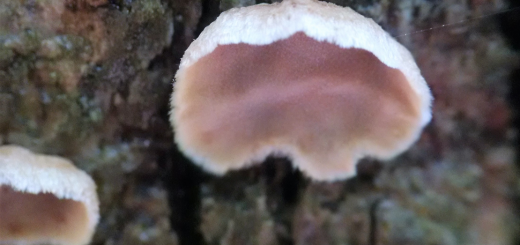
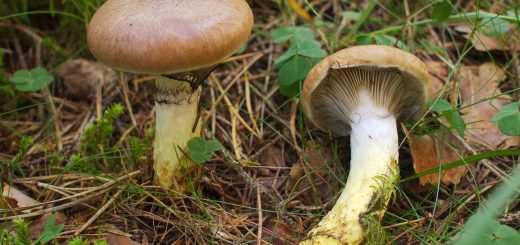
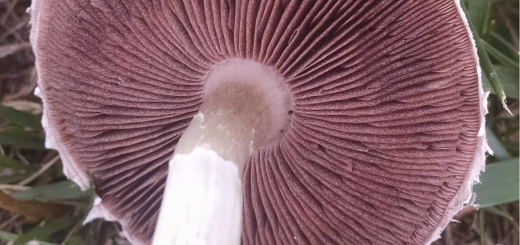





![#011: Characteristics of Kingdom Fungi [Archived]](https://www.fungusfactfriday.com/wp-content/themes/hueman/assets/front/img/thumb-small-empty.png)

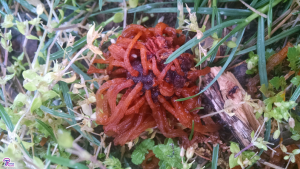
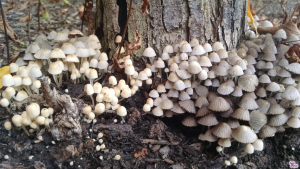
1 Response
[…] veil, free gills, and a white spore print. Well-known amanitas include A. muscaria (FFF#069 and #121) as well as the Destroying Angels […]